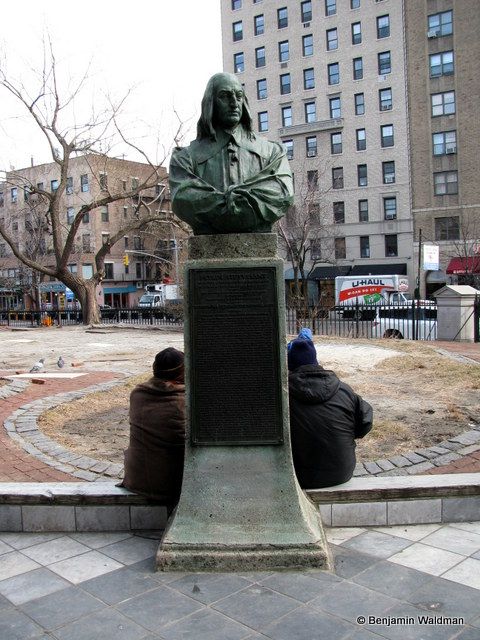NYC's Long-Awaited Davis Center Opens in Central Park
A stunning new facility at Harlem Meer opens to the public this weekend!



New Yorkers have been agitators and disrupters from the start, even back when New Amsterdam was just a small settlement on the tip of Manhattan. On this date February 2nd in 1653, New Amsterdam was officially declared a municipality by the Dutch government.
During the 1620s, New Amsterdam was set up as a trading outpost run by the Dutch West India Company, one of the most powerful corporations in world history. Before “Peg Leg” Peter Stuyvesant was sent over by company to restore order in 1647, it was a debaucherous town of fewer than 1,000 residents. Drunken sailors ran amok in saloons, trash piled everywhere and farm animals roamed the streets. Men bowled on the lawns of Bowling Green, and women washed clothes in the stream on Maiden Lane.
Stuyvesant ruled New Amsterdam with an iron fist until 1664. He cleaned up the port town, but his heavy-handed moralism and anti-democratic ways quickly wore on the populace. Stuyvesant prevented religious denominations except the Dutch from erecting houses of worship, instituted taxation without representation, and even tried to ban the popular game “ride the goose,” which is kind of what it sounds like.

1916 Redrawing of The Castello Plan, map of 1660 New Amsterdam via Wikimedia Commons.
In 1649 the Nine Men, Stuyvesant’s handpicked advisors, turned on him, sending a Petition and Remonstrance letter directly to the Dutch government. The letter contained grievances against Stuyvesant and recommendations for self-government. It was, in some respects, an ancestor of the Declaration of Independence. To the fury of the Dutch West India Company directors, the Dutch government granted the petitioners’ request to establish a (limited) representative municipal government.

A bust of Peter Stuyvesant by St. Mark’s in the Bowery, where he is buried.
On February 2, 1653, the newly recognized celebrated with a parade. At the front of that parade? Peter Stuyvesant, who announced that he would gladly appoint a municipal government to continue advising him. Little would change practically that day, or anytime soon. But the discontent against Stuyvesant continued throughout the 1650s, leading to the famous Flushing Remonstrance of 1657, which demanded “love, peace and liberty” for all religious faiths. This discontent against Stuyvesant was part of the reason that when the British ships appeared on Manhattan’s shoreline in 1664, the city surrendered without a bullet being fired.
There’s an old adage that if you see a question mark in a newspaper headline, the answer to the question is “no.” In terms of changing the course of New York City history, February 2, 1653 is probably no more historic than any number of occasions, but it was the first time that the settlement on the island of Manhattan was recognized as a city by a European government. For the men and women who fought for that, thousands of miles from their places of birth, in a hostile outpost controlled by the world’s most powerful corporation, that is an accomplishment worth celebrating.
Read about the history of Stuyvesant Street, the only cardinal east-west street in NYC. To learn more about New York City political history, visit Janos.nyc.
Subscribe to our newsletter